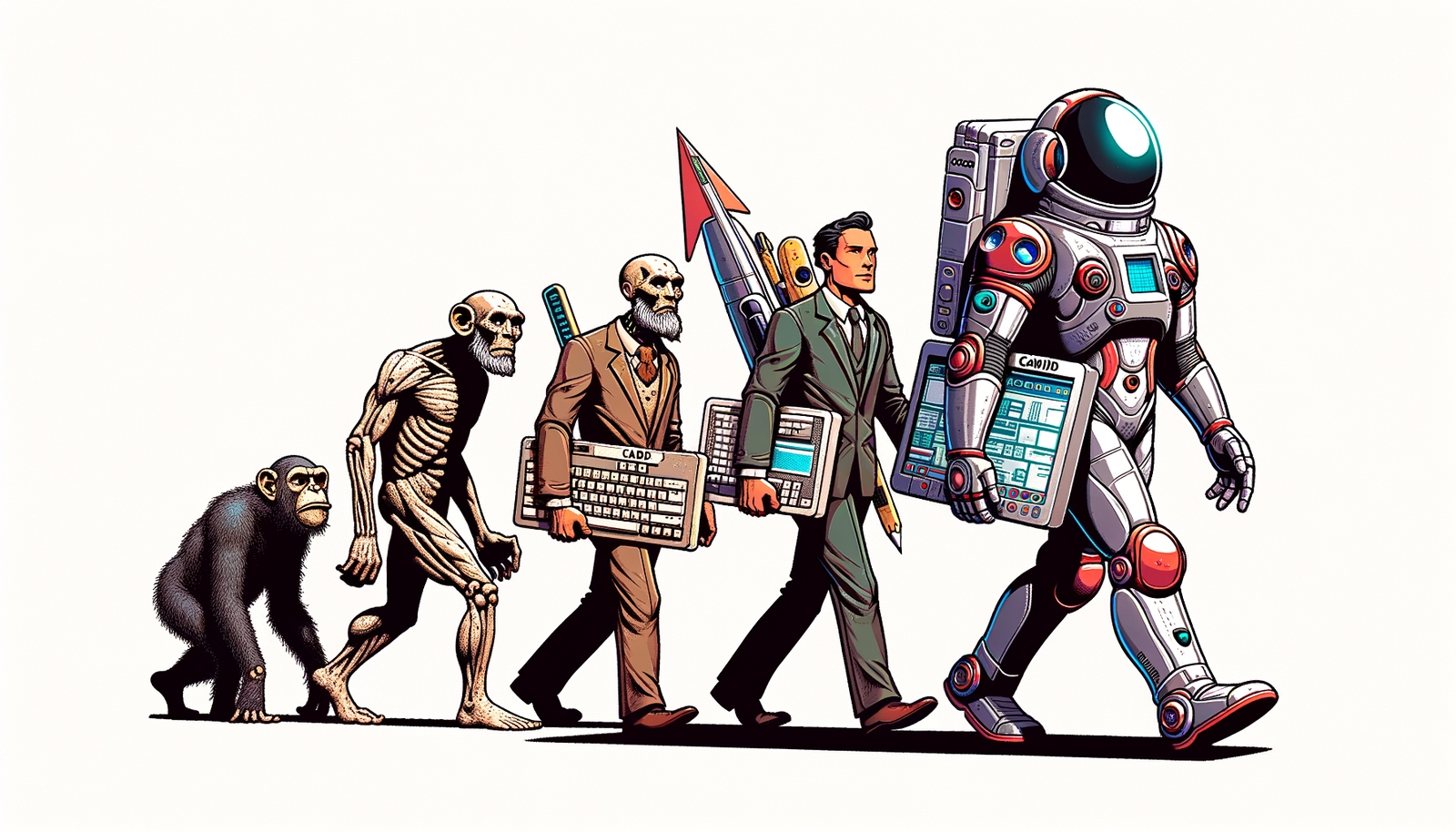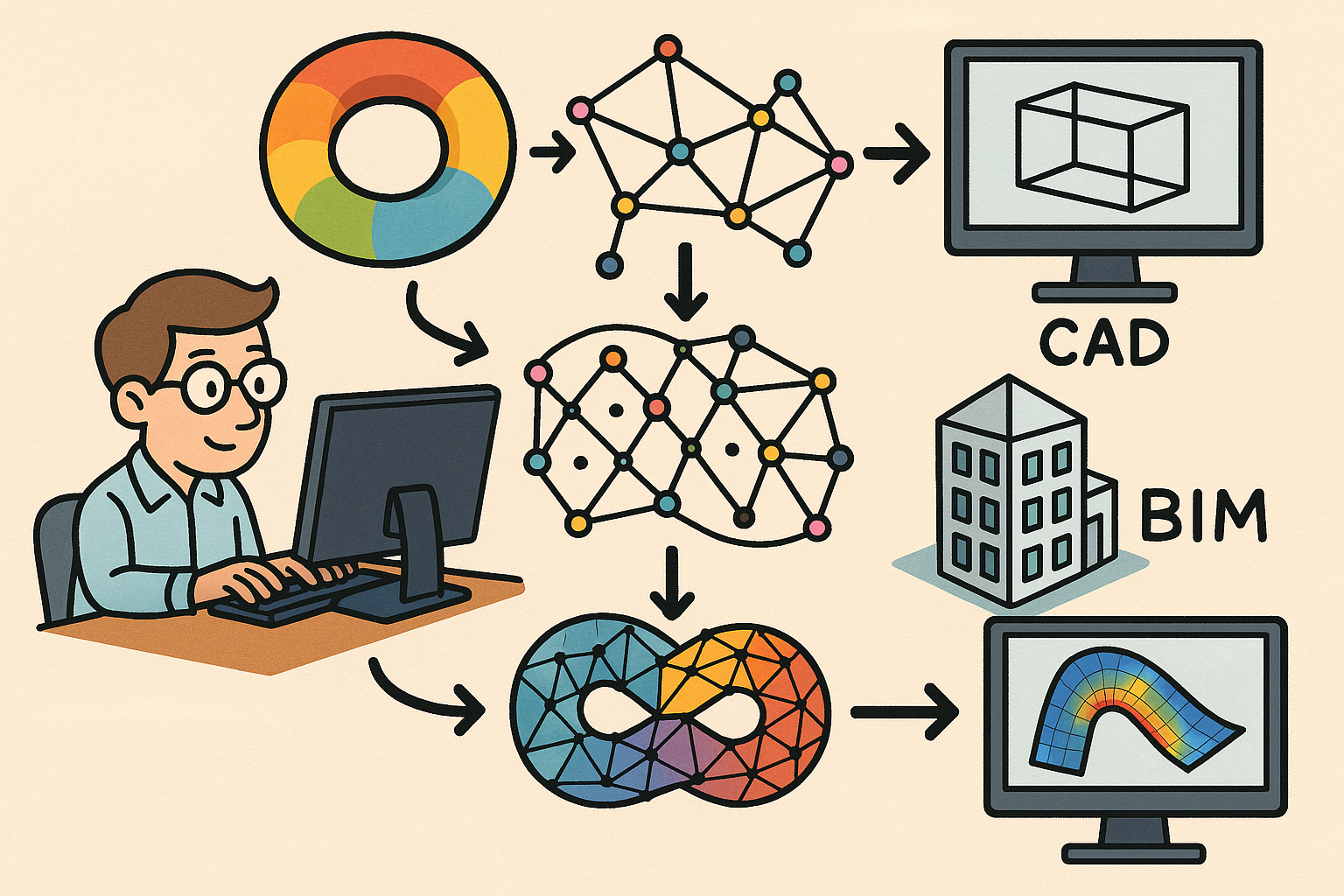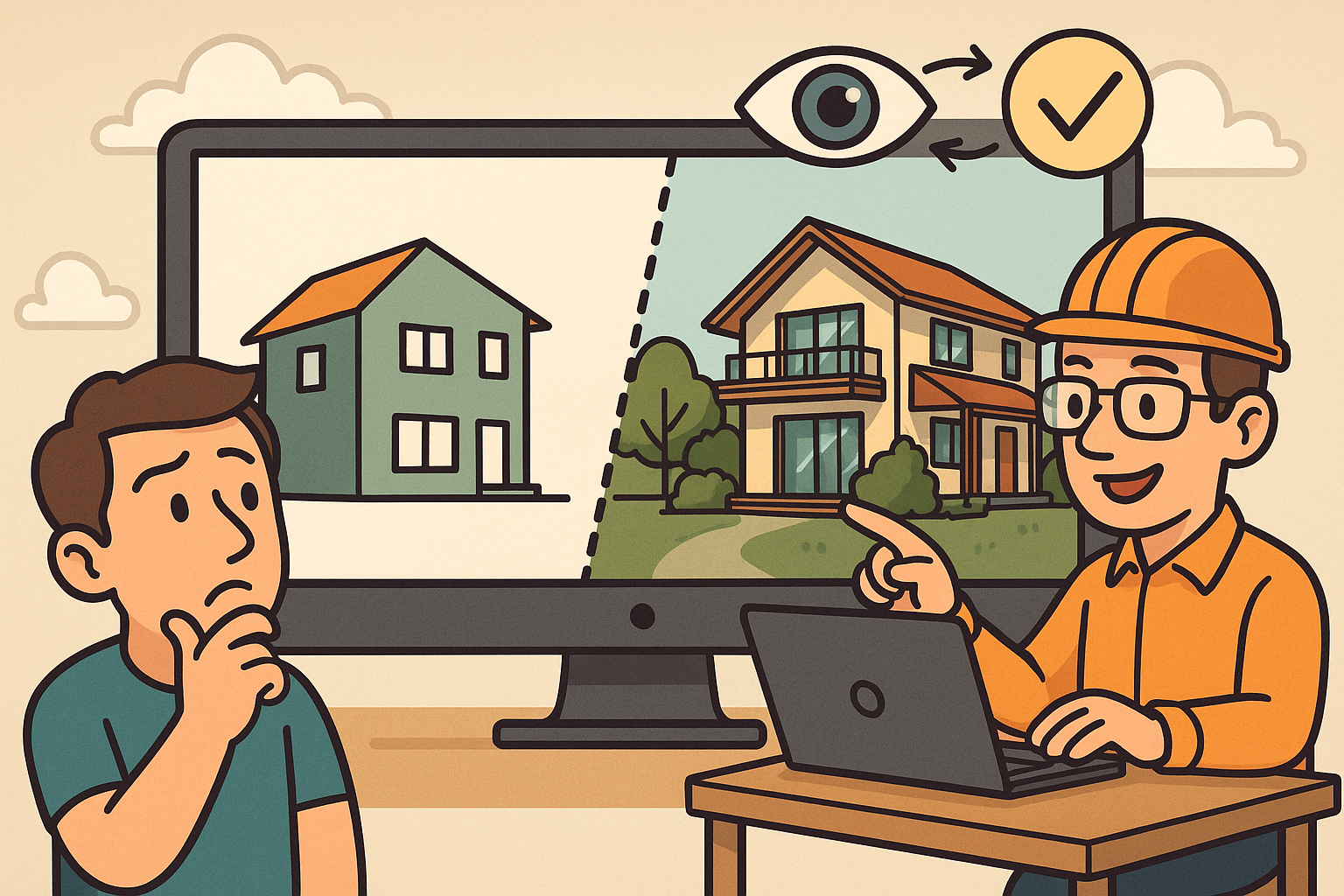Your Cart is Empty
Customer Testimonials
-
"Great customer service. The folks at Novedge were super helpful in navigating a somewhat complicated order including software upgrades and serial numbers in various stages of inactivity. They were friendly and helpful throughout the process.."
Ruben Ruckmark
"Quick & very helpful. We have been using Novedge for years and are very happy with their quick service when we need to make a purchase and excellent support resolving any issues."
Will Woodson
"Scott is the best. He reminds me about subscriptions dates, guides me in the correct direction for updates. He always responds promptly to me. He is literally the reason I continue to work with Novedge and will do so in the future."
Edward Mchugh
"Calvin Lok is “the man”. After my purchase of Sketchup 2021, he called me and provided step-by-step instructions to ease me through difficulties I was having with the setup of my new software."
Mike Borzage
Design Software History: The Rise of Direct Modeling: SpaceClaim's Impact on CAD Evolution
October 22, 2024 11 min read


Introduction to Direct Modeling Software
The realm of computer-aided design (CAD) has witnessed significant transformations over the decades, with modeling approaches evolving to meet the growing demands of designers and engineers. At the forefront of these developments is direct modeling, an innovation that has reshaped how professionals interact with digital models. Direct modeling refers to a method where designers can manipulate geometric shapes directly and intuitively without the constraints imposed by a model's history or feature definitions. This approach contrasts sharply with traditional feature-based or parametric modeling, which relies on a sequential build-up of features and a dependency on a history tree. The significance of direct modeling in CAD lies in its ability to offer greater flexibility and speed in the design process. By allowing immediate interaction with the geometry, users can make rapid adjustments, explore alternative design concepts effortlessly, and respond swiftly to changes in project requirements. This is particularly valuable in a fast-paced engineering environment where time-to-market is critical. Direct modeling facilitates a more iterative and exploratory design process, empowering designers to focus on creativity and innovation rather than being bogged down by the complexities of the software. Historically, traditional modeling approaches dominated the CAD landscape. In feature-based modeling, also known as parametric modeling, designs are constructed through a series of features like extrusions, revolves, cuts, and fillets. Each feature is defined by specific parameters and constraints, and these features are built upon one another in a hierarchical history tree. While powerful, this methodology can introduce significant complexity. Modifying a feature early in the history tree can have cascading effects on subsequent features, potentially causing errors or requiring extensive rework. This dependency on the model's construction history can make late-stage changes cumbersome and time-consuming. Additionally, the need to meticulously plan the sequence of features adds a layer of rigidity to the design process. The limitations of traditional feature-based modeling highlighted the need for more flexible tools. Users sought solutions that would enable them to modify models without navigating through intricate history trees or dealing with broken feature dependencies. This demand set the stage for direct modeling's emergence as a viable alternative. Direct modeling addresses these challenges by removing the reliance on a model's feature history. Instead, it treats the geometry as a malleable entity that can be adjusted directly. This approach simplifies the process of making changes, reduces the learning curve for new users, and enhances collaboration by making models more accessible to team members who may not be CAD experts. Enter SpaceClaim, a pioneering software that played a crucial role in bringing direct modeling to the forefront of the CAD industry. Launched in 2005, SpaceClaim embraced direct modeling as its core philosophy, aiming to make 3D modeling more accessible and efficient. By prioritizing ease of use and flexibility, SpaceClaim sought to empower engineers and designers to focus on innovation rather than being constrained by the technical limitations of traditional CAD systems. Its entry into the market not only introduced a powerful new tool but also signaled a broader shift in the industry towards more user-centric design software. SpaceClaim's contribution to direct modeling has had a lasting impact, influencing subsequent developments in CAD and shaping the way modern design professionals approach 3D modeling.The Development of SpaceClaim
The genesis of SpaceClaim Corporation was driven by a collective vision to revolutionize 3D modeling by overcoming the inherent limitations of traditional CAD systems. Established in 2005, the company was founded by a team of seasoned professionals with deep roots in the CAD and engineering software industries. Among the prominent figures was Michael Payne, a co-founder who previously played instrumental roles in the development of leading CAD software like PTC's Pro/ENGINEER and SolidWorks. His extensive experience and insight into the industry's challenges provided a strong foundation for SpaceClaim's innovative approach. Chris Randles, who served as President and CEO, brought strategic leadership and a keen understanding of the technology market, guiding the company's direction and growth. The collective expertise of the founding team enabled SpaceClaim to identify critical pain points experienced by CAD users across various industries. They recognized that traditional CAD tools were often too complex, with steep learning curves and workflows that hindered rapid design iteration. The vision was to create a modeling tool that was intuitive, flexible, and accessible to a broader audience, including those who might not be dedicated CAD specialists. This democratization of 3D modeling was a central tenet of SpaceClaim's mission, aiming to empower engineers, analysts, and designers to engage directly with models without the barriers imposed by complex software. In its early development, SpaceClaim faced several challenges, both technical and market-related. Convincing a market accustomed to established CAD paradigms of the value of a new approach required not only a superior product but also effective communication of its benefits. The company invested heavily in innovation to differentiate itself from existing solutions. One of the key innovations was the creation of an intuitive user interface that simplified interaction with 3D models. This interface minimized the need for extensive training, allowing users to quickly become proficient and productive. Technically, SpaceClaim had to develop robust algorithms to support direct manipulation of complex geometries. Ensuring that the software could handle a wide range of modeling tasks without the crutch of a feature history posed significant computational challenges. The development team focused on creating advanced geometry engines capable of real-time modifications, providing immediate feedback to the user. This capability was critical in setting SpaceClaim apart from other CAD tools by offering a seamless and responsive modeling experience. The purpose of SpaceClaim was clear: to address the limitations of traditional CAD systems by providing a tool that was both powerful and user-friendly. By eliminating the dependency on a feature-based history tree, SpaceClaim enabled users to modify models directly and intuitively. This approach not only sped up the design process but also reduced errors and the need for rework. The software's compatibility with a wide range of file formats further enhanced its utility, allowing users to import and edit models from other CAD systems with ease. This interoperability was a strategic feature, recognizing that in the real world, designers often need to work with models originating from various sources. Through its innovative solutions and user-centric design, SpaceClaim carved out a significant niche in the CAD industry. It challenged conventional methodologies and demonstrated that there was a viable alternative to the complexity of traditional CAD tools. The company's development journey reflects a commitment to pushing the boundaries of what is possible in design software, driven by a clear understanding of user needs and a bold vision for the future of modeling.Key Features and Innovations of SpaceClaim
SpaceClaim's success is anchored in its array of innovative features that reimagined the user experience in 3D modeling. Central to its appeal was a meticulously designed user interface that prioritized simplicity and accessibility without sacrificing functionality. The interface employed a context-sensitive approach, presenting tools and options relevant to the task at hand, thereby reducing clutter and cognitive load on the user. This design philosophy was underpinned by an understanding that engineers and designers desired tools that complemented their workflow rather than complicating it. By streamlining the interface, SpaceClaim made it possible for users to learn and navigate the software efficiently, regardless of their prior CAD experience. Among the unique capabilities that distinguished SpaceClaim was its robust implementation of direct modeling. The software allowed for the direct manipulation of geometry using intuitive tools such as pull, move, fill, and combine. These operations could be performed without reference to a feature history, enabling users to push and pull on surfaces and edges to modify shapes dynamically. This flexibility was particularly advantageous when making late-stage design changes or when working with imported models lacking feature information. Users could effortlessly adjust dimensions, reshape components, and explore design variations in real-time, fostering a more iterative and creative process. Another significant innovation was SpaceClaim's commitment to integration with other software tools and engineering platforms. Recognizing that CAD does not exist in isolation, SpaceClaim was engineered to work seamlessly within a broader ecosystem of engineering applications. For example, its tight integration with simulation software such as ANSYS allowed for rapid preparation of models for analysis. Engineers could quickly simplify or adjust models to meet the requirements of finite element analysis (FEA) without the need to recreate geometry. This interoperability streamlined the transition from design to simulation, reducing time and potential errors. SpaceClaim's impact on workflows across various industries was profound. In product design, the software enabled designers to iterate rapidly, testing multiple concepts with ease. Its intuitive tools reduced the barrier to entry, allowing even non-CAD specialists to contribute to the design process. In manufacturing, the ability to make quick adjustments facilitated the creation of tooling and fixtures, optimizing designs for production. The software's capability to edit and repair imported models meant that manufacturers could work with customer-provided data more effectively, addressing issues without the need for complex re-modeling. To clarify the transformative features of SpaceClaim, consider the following key innovations: - **Intuitive Direct Modeling Tools**: Empowered users to modify geometry directly, enhancing creativity and reducing the learning curve. - **Seamless Interoperability**: Supported a wide range of file formats and integrated with other engineering software, promoting efficiency. - **Flexible Workflow Adaptability**: Accommodated various stages of the design process, from initial concept to final preparation for manufacturing or simulation. - **Enhanced Collaboration Features**: Facilitated teamwork by allowing multiple users to interact with models without deep CAD expertise. Furthermore, SpaceClaim introduced features such as automatic healing and repair of imported geometries, addressing common issues like gaps and inconsistencies in models received from external sources. This capability was critical in industries where collaboration with clients and suppliers is essential, ensuring that models could be used reliably without extensive manual correction. Overall, SpaceClaim's key features and innovations not only addressed specific technical challenges but also redefined the expectations for CAD software. By blending powerful functionality with an accessible interface, SpaceClaim set new standards for usability and efficiency in 3D modeling.The Impact of SpaceClaim on the CAD Industry
SpaceClaim's introduction into the CAD industry was a disruptive force that significantly influenced the evolution of design software. By championing direct modeling as a viable and superior alternative to traditional parametric modeling, SpaceClaim prompted both users and competitors to reconsider established methodologies. Its success demonstrated a clear market demand for more flexible and user-friendly tools, leading to a broader industry shift towards incorporating direct modeling capabilities. Major CAD software providers began integrating direct editing features into their products, acknowledging the benefits that SpaceClaim had brought to light. Comparatively, other notable direct modeling tools emerged, such as Siemens' Solid Edge with Synchronous Technology and PTC's Creo Direct. While these tools offered direct modeling functionalities, they often did so within the framework of existing parametric systems. This hybrid approach provided users with the option to choose between or combine parametric and direct modeling techniques. However, SpaceClaim's pure direct modeling approach offered a distinct advantage in terms of simplicity and performance. Its software was unencumbered by legacy code and complexity associated with maintaining dual modeling paradigms, resulting in a more streamlined and responsive user experience. The influence of SpaceClaim extended beyond software features; it also impacted how companies approached collaboration across design teams. Traditional CAD systems often created silos within organizations due to their complexity and the specialized knowledge required to operate them. SpaceClaim's accessible interface broke down these barriers, enabling a wider range of team members to engage with 3D models. Engineers, analysts, manufacturers, and even sales and marketing personnel could interact with designs, provide feedback, and make necessary adjustments without extensive training. This inclusivity fostered a more integrated workflow, reducing miscommunication and accelerating the product development process. Moreover, SpaceClaim's impact can be seen in the way it empowered companies to be more agile and responsive to market changes. The ability to iterate designs quickly and accommodate client feedback efficiently became a competitive advantage. Companies adopting SpaceClaim could reduce development cycles, bring products to market faster, and adapt to evolving customer needs with greater ease. This agility was particularly valuable in industries characterized by rapid innovation and customization, such as consumer electronics, automotive, and aerospace. To emphasize the broader implications of SpaceClaim's impact on the CAD industry: - **Catalyzed Industry Innovation**: Prompted competitors to enhance their products, leading to overall advancements in CAD technology. - **Redefined User Expectations**: Elevated the importance of user experience in software design, pressuring other companies to improve their interfaces and usability. - **Influenced Educational Approaches**: With easier-to-use tools, educational institutions could introduce CAD concepts to students earlier and more effectively, expanding the pool of skilled professionals. - **Supported Global Collaboration**: By simplifying the modeling process, SpaceClaim facilitated international collaboration, allowing teams across different regions to work together seamlessly. SpaceClaim's influence is also evident in the strategic moves of larger corporations. In 2014, SpaceClaim was acquired by ANSYS, a global leader in simulation software. This acquisition underscored the value of SpaceClaim's technology and its potential to enhance integrated solutions within the engineering software market. Through ANSYS, SpaceClaim's direct modeling capabilities were further expanded and integrated into simulation-driven product development workflows, highlighting the synergistic benefits of combining modeling and analysis tools. Overall, SpaceClaim not only introduced innovative features but also reshaped industry dynamics, encouraging a shift towards more accessible, efficient, and collaborative design processes. Its legacy is reflected in the ongoing evolution of CAD software, where user needs and workflow efficiency continue to drive technological advancements.Conclusion
SpaceClaim's journey from its inception to becoming a pivotal player in the CAD industry encapsulates a story of innovation, dedication to user needs, and a willingness to challenge established norms. The company's contributions to direct modeling have not only provided immediate benefits to its users but have also had a lasting influence on the trajectory of CAD software development. By addressing the limitations of traditional parametric systems, SpaceClaim empowered professionals across various disciplines to engage more deeply and creatively with 3D modeling. Reflecting on the evolution of design software, it's clear that SpaceClaim was instrumental in steering the industry towards user-centered and flexible modeling approaches. The emphasis on intuitive interfaces and direct interaction with geometry resonated with a generation of users seeking tools that enhanced productivity without sacrificing ease of use. This shift aligns with broader trends in software development, where user experience has become paramount. The success of SpaceClaim demonstrated that even in complex fields like CAD, prioritizing the user's needs can lead to both commercial success and industry-wide change. Looking ahead, the principles established by SpaceClaim continue to shape future trends in CAD and beyond. We are witnessing the rise of technologies that further democratize design, such as cloud-based CAD platforms that allow for real-time collaboration across geographies. Artificial intelligence and machine learning are beginning to play roles in automating routine tasks and providing design suggestions, enhancing the capabilities introduced by direct modeling. Augmented and virtual reality technologies are providing new ways to interact with 3D models, making design more immersive and accessible. The concept of model-based definition (MBD) is gaining traction, where the 3D model becomes the central source of all product information, reducing the reliance on traditional 2D drawings. SpaceClaim's ability to handle models directly and efficiently positions it well within this trend, as it simplifies the creation and manipulation of detailed 3D data. Furthermore, the integration of CAD with other disciplines is becoming increasingly important. Multidisciplinary optimization requires tools that can seamlessly interact with various software applications, a capability that SpaceClaim has championed through its commitment to interoperability. As the industry continues to evolve, challenges such as managing the ever-growing complexity of products, ensuring data security in cloud environments, and facilitating collaboration among increasingly diverse teams will need to be addressed. The foundational work done by SpaceClaim in making software more accessible and flexible provides a valuable blueprint for tackling these challenges. Companies will need to continue focusing on the user experience, leveraging new technologies to create tools that are both powerful and intuitive. In conclusion, SpaceClaim's impact on the CAD industry is both profound and enduring. By redefining how professionals interact with 3D models, SpaceClaim not only improved individual workflows but also influenced the broader direction of software development in design and engineering. Its legacy is evident in the ongoing pursuit of tools that prioritize user needs, foster collaboration, and adapt to the fast-paced demands of modern industry. As technology continues to advance, the principles established by SpaceClaim will undoubtedly remain relevant, guiding future innovations that shape the way we design, create, and collaborate.Also in Design News

Design Software History: From Computational Topology to Design Software: Integrating TDA into CAD, BIM and CAE Workflows
December 25, 2025 10 min read
Read More
Scene-Aware LOD: Perception-Driven Fidelity for Scalable Design Visualization
December 25, 2025 12 min read
Read MoreSubscribe
Sign up to get the latest on sales, new releases and more …



